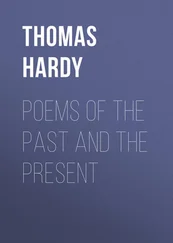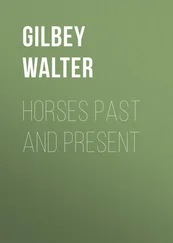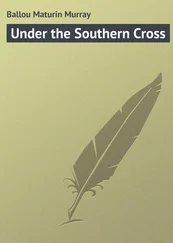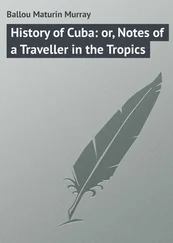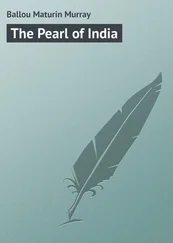Maturin Ballou - Due South - or, Cuba Past and Present
Здесь есть возможность читать онлайн «Maturin Ballou - Due South - or, Cuba Past and Present» — ознакомительный отрывок электронной книги совершенно бесплатно, а после прочтения отрывка купить полную версию. В некоторых случаях можно слушать аудио, скачать через торрент в формате fb2 и присутствует краткое содержание. ISBN: , Жанр: foreign_prose, на английском языке. Описание произведения, (предисловие) а так же отзывы посетителей доступны на портале библиотеки ЛибКат.
- Название:Due South: or, Cuba Past and Present
- Автор:
- Жанр:
- Год:неизвестен
- ISBN:http://www.gutenberg.org/ebooks/30130
- Рейтинг книги:4 / 5. Голосов: 1
-
Избранное:Добавить в избранное
- Отзывы:
-
Ваша оценка:
- 80
- 1
- 2
- 3
- 4
- 5
Due South: or, Cuba Past and Present: краткое содержание, описание и аннотация
Предлагаем к чтению аннотацию, описание, краткое содержание или предисловие (зависит от того, что написал сам автор книги «Due South: or, Cuba Past and Present»). Если вы не нашли необходимую информацию о книге — напишите в комментариях, мы постараемся отыскать её.
Due South: or, Cuba Past and Present — читать онлайн ознакомительный отрывок
Ниже представлен текст книги, разбитый по страницам. Система сохранения места последней прочитанной страницы, позволяет с удобством читать онлайн бесплатно книгу «Due South: or, Cuba Past and Present», без необходимости каждый раз заново искать на чём Вы остановились. Поставьте закладку, и сможете в любой момент перейти на страницу, на которой закончили чтение.
Интервал:
Закладка:
The sea was like molten sapphire as we glided swiftly along the southern coast of Cuba, watching the gracefully undulating shore. The mountains rose higher and higher, until they culminated in the lofty peak of Pico Turquino (blue mountain), over ten thousand feet high, as lately ascertained by actual measurement. There are coves and bays along this coast where oysters do grow upon trees, ridiculous as the assertion first strikes the ear. The mangrove-trees extend their roots from the shore into the sea, to which the oysters affix themselves, growing and thriving until plucked by the fishermen. They are small and of an inferior species compared with those of our own coast, but are freely eaten in the island. Near the shore hereabouts are many islets containing from three to five square miles, some of which are quite barren, while others are delicious gardens, full of tropical fruit trees, flowers, and odoriferous plants, where Paul and Virginia might have felt quite at home, wandering hand in hand.
Soon after passing the remarkably sheltered port of Guantanamo, which was for nearly a century the most notorious piratical rendezvous in the West Indies, the famous castle of Santiago is seen. It is known as Moro Castle, but it antedates the more familiar Moro of Havana by a full century. This antique, yellow, Moorish-looking stronghold – which modern gunnery would destroy in about eight minutes – is picturesque to the last degree, with its crumbling, honeycombed battlements, and queer little flanking turrets, grated windows, and shadowy towers. It is built upon the face of a lofty dun-colored rock, upon whose precipitous side the fortification is terraced. It stands just at the entrance of the narrow channel leading to the city, so that in passing in one can easily exchange oral greetings with the sentry on the outer battlement. What strikingly artistic pictures the light and shade together formed with those time-stained walls, as we steamed slowly by them! On the ocean side, directly under the castle, the sea has worn a gaping cave, so deep that it has not been explored within the memory of the people living in the neighborhood. The broad and lofty entrance is in form as perfect an arch as could be drawn by the pencil of a skillful architect. As is usual with such formations all over the world, there is a romantic legend concerning the cave related as connected with the olden time, and there is also a prevailing superstition, that no one attempting to explore it will live to return.
In passing up the channel two or three little forts of queer construction are seen, supplementing the larger one, placed upon jutting headlands. The Moro of Santiago is now used as a prison for political offenders; its days of defensive importance ended with the period of the buccaneers, against whose crude means of warfare it was an ample protection. As we steamed past it that sunny afternoon, stimulated by the novelty of everything about us, a crowd of pallid, sorrowful faces appeared at the grated windows, watching us listlessly. Two days later five of them, who were condemned patriots, were led out upon those ramparts and shot, their bodies falling into the sea, and eight were sent to the penal settlement of Ceuta. Spain extends no mercy to those who dare to raise their hands or voices in favor of freedom; her political existence is sustained only in an atmosphere of oppression and cruelty. Every page of her history is a tableau of bloodshed and torture. The narrow winding channel which leads from the open sea to the harbor passes through low hills and broad meadows covered with rank verdure, cocoanut groves, and little fishing hamlets. Thrifty laurels, palms with their graceful plumes of foliage, and intensely green bananas line the way, with here and there upon the banks a pleasant country house in the midst of a pretty garden of flowering shrubs. So close is the shore all the while that one seems to be navigating upon the land, gliding among trees and over greensward rather than on blue water. Presently we pass a sharp angle of the hills into a broad, sheltered bay, and before us lies the quaint, rambling old city of Santiago de Cuba, built upon a hillside, like Tangier in Africa, and nearly as Oriental as that capital of Morocco. The first most conspicuous objects to meet the eye are the twin towers of the ancient cathedral which have withstood so many earthquakes. The weather-beaten old quartermaster on our forecastle applies the match to his brass twelve-pounder, awaking a whole broadside of echoes among the mountains, the big chain rushes swiftly through the hawse-hole, and the ship swings at her anchor in the middle of the picturesque bay.
A boat was promptly secured with which to land at this ancient city, founded by Velasquez. From the moment one touches the shore a sense of being in a foreign land forces itself upon the new-comer. The half-unintelligible language, the people, the architecture, the manners, the vegetation, even the very atmosphere and the intensity of the sunshine, are novel and attractive. It is easy to convey our partial impressions of a new place, however unique it may be, but not our inward sensations. The former are tangible, as it were, and may be depicted; the latter are like atmospheric air, which cannot be seen, but is felt. The many-colored, one-story houses of Santiago are Moorish in architecture, ranged in narrow streets, which cross each other at right angles with considerable regularity, but with roadways in an almost impassable condition, lined with sidewalks of ten or fifteen inches in width. These thoroughfares were once paved with cobblestones, but are now characterized by dirt and neglect, a stream of offensive water constantly percolating through them, in which little naked children are at play. No wonder that the city is annually decimated by yellow fever; the surprise is that it does not prevail there every month in the year. The boys and girls of the lower classes, white and black, are not thought to require clothing until they are about nine years of age. A few negresses were observed sitting on the ground, at the corners of the streets, beside their baskets containing sweet cakes, mouldy biscuits, bananas, and grape-fruit, the uninviting appearance of which seemed to indicate that they were in the last stage of collapse. Was it possible any one could eat such stuff? As we passed and repassed these patient waiters, certainly no purchasers appeared. How the forty-five thousand inhabitants manage to achieve a living it would be difficult to imagine, for the town seemed to be as dead and void of all activity as Cordova, in far-off Spain, the sleepiest city in all Europe. Santiago has not a single bookstore within its limits. No other place in Christendom, with so numerous a population, could exist, outside of Spain, without some literary resort. There are here three or four spacious two-story club-houses, with some pretension to neatness and social accommodations; but then no Cuban town of any size would be complete without these anti-domestic institutions, where the male population may congregate for evening entertainment. The interior arrangements of these club-houses were entirely exposed to view, as we passed by the iron-grated windows, devoid of curtains, blinds, or screens of any sort, and extending from ceiling to floor.
Santiago dates back to the year of our Lord 1514, making it the oldest city in the New World, next to San Domingo, and it will be remembered as the place whence Cortez sailed, in 1519, to invade Mexico. Here also has been the seat of modern rebellion against the arbitrary and bitterly oppressive rule of the home government. The city is situated six hundred miles southeast of Havana, and, after Matanzas, comes next to it in commercial importance, its exports reaching the handsome annual aggregate of eight millions of dollars. It is the terminus of two lines of railways, which pass through the sugar districts, and afford transportation for this great staple. Three leagues inland, among the mountains, are situated the famous Cobre copper mines, said to be of superior richness, and whence, in the days of their active working, four million dollars' worth of the ore has been exported in one year. This was the amount shipped in 1841, and so late as 1867 six thousand tons were exported in ten months. Not content with realizing a very large income from the mines by way of taxes upon the product, the Spanish government increased these excise charges to such an extent as to absorb the entire profits of the works and kill the enterprise, so that the rich ores of Cobre now rest undisturbed in the earth. It seems there is an Indian village near the copper mines, whose people are represented to be the only living descendants of the aborigines, – the Caribs whom Columbus found here on first landing. Careful inquiry, however, led us seriously to doubt the authenticity of the story. Probably this people are peculiar in their language, and isolation may have caused them to differ in some respects from the inhabitants of the valley and plains, but four centuries must have destroyed every trace of the early inhabitants of Cuba. Having been from the very outset enslaved and brutally treated by the Spaniards, it is believed that as early as the year of our Lord 1700 they had utterly disappeared, and some historians say no trace even was to be found of the native race one century after the settlement of the island by Europeans.
Читать дальшеИнтервал:
Закладка:
Похожие книги на «Due South: or, Cuba Past and Present»
Представляем Вашему вниманию похожие книги на «Due South: or, Cuba Past and Present» списком для выбора. Мы отобрали схожую по названию и смыслу литературу в надежде предоставить читателям больше вариантов отыскать новые, интересные, ещё непрочитанные произведения.
Обсуждение, отзывы о книге «Due South: or, Cuba Past and Present» и просто собственные мнения читателей. Оставьте ваши комментарии, напишите, что Вы думаете о произведении, его смысле или главных героях. Укажите что конкретно понравилось, а что нет, и почему Вы так считаете.



